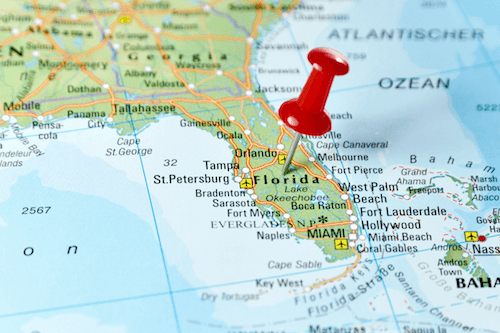
Charles Schwab is a multinational financial services company founded in 1971 and headquartered in San Francisco, California.
Charles Schwab has an array of products and services that it offers to both retail and institutional clients encompassing commercial banking, stock brokerage, and wealth management advisory services.
As of March 2023, they have 34 million active brokerage accounts, 1.7 million bank accounts and roughly $7.38 trillion (yes, with a T) in total client assets.
For the purposes of this review, we will focus on the brokered CD (certificate of deposit) rates offered through Charles Schwab.
To see if their CDs are right for you, continue reading our review below.
Charles Schwab Brokered CD Rates + Account Details

It is important to keep in mind that Charles Schwab does not issue CDs themselves, but rather brokers (or re-sells) bank CDs issued by FDIC-insured banks and financial institutions.
Charles Schwab CDs require a minimum deposit of $1,000 and you may increase your investment size by increments of $1,000.
CD Rates
| Term | APY |
| 3 month | 5.46% |
| 6 month | 5.32% |
| 9 month | 5.39% |
| 12 month | 5.50% |
| 18 month | 5.30% |
| 2 years | 5.25% |
The CD rates displayed above were surveyed on April 17, 2024.
To put these offers in perspective, the current national average on a 12 month CD and a 60 month CD sit at just 1.81% and 1.39% APY, respectively, according to recent FDIC data.
That said, top yields from online banks and nationally available credit unions are now hovering around 5.50% and 4.50% APY for the same respective terms.
How do Charles Schwab’s CD Rates Compare?
If you want to see how Charles Schwab’s CD rates stack up against other major brokerages then take a look at the table below comparing top yields from some of the largest brokerage firms in the country.
| Brokerage | Best APY | CD Term |
| Charles Schwab | 5.50% | 12 months |
| Edward Jones | 5.30% | 3 months |
| Fidelity | 5.35% | 3 months |
| Morgan Stanley | 5.40% | 9 months |
| Vanguard | 5.35% | 1-6 months |
How Much Can You Earn with a Charles Schwab CD?
If you’re curious about how much money you can make with a Charles Schwab CD take a look at the table below. This shows how much money you’d earn in total interest payments with a few of Charles Schwab’s CD offers. It assumes a deposit size of $100,000.
| CD Term | APY | Total Earnings |
| 3 months | 5.46% | $1,337.91 |
| 6 months | 5.32% | $2,625.53 |
| 9 months | 5.39% | $4,015.86 |
| 12 months | 5.50% | $5,500.00 |
Brokerage Fees
For all new issue CDs, a selling concession is already included in the overall price for both online and broker assisted trades.
For all CDs purchased on the secondary market through Schwab CD OneSource, a $1 transaction fee per $1,000 is applied. This comes with a $10 minimum and a $250 maximum.
If you need a broker’s assistance for the trade you will also be charged an additional $25 as a trade service charge.
FDIC-Insurance
All of the brokered CDs offered through Schwab OneSource are federally insured by the FDIC through the partner bank. Thus the same coverage extends to you and can even exceed the $250,000 maximum if you choose to open more than one CD with more than one bank.
For example, if you open two CDs from two different banks through Schwab OneSource, you will get FDIC coverage of $250,000 from one bank and then $250,000 from the second bank. Assuming you have no other deposits at those banks, you’re covered for $500,000.
Compounding Interest
Interest on brokered CDs is not compounded as it would be with a bank or credit union as it requires immediate distribution. If you want compounding interest on a brokered CD you will need to reinvest your interest payments into a different account.
Grace Period
The exact grace period for your Charles Schwab CD can be found by contacting the issuing banking institution. Your broker can help you access this information.
In general, banks and credit unions typically offer a 7 – 10 calendar-day grace period in which the deposit holder may add or withdraw funds penalty-free before the CD automatically renews into a new CD with the same term and the going APY at that time.
Early Withdrawal Fees
Early withdrawal fees do not exist with brokered CDs. If you need funds prior to maturity, your Charles Schwab broker will help you sell it on the secondary market.
You may lose money on this sale depending on where interest rates are at that time. Learn more in the section below.
Drawbacks and Risks
The main risk in purchasing a brokered CD through Charles Schwab (or any brokerage firm for that matter) is if you need your funds prior to maturity.
As mentioned above, in this case you will need to sell your CD on the secondary market. Depending on the interest rate environment at that time it is possible to sell your CD for either less or more than you purchased it for.
Consider the following: You purchase a 2 year CD and need to cash out unexpectedly after the first year. During this time CD rates have also risen substantially. At this point you will likely need to sell your CD at a lower price than you purchased it for because much more attractive rates are being offered on new issue CDs.
Callable CDs
In some cases your brokered CD through Charles Schwab may be callable. This means the CD issuer may redeem the CD at a specified date or at the sole discretion of the issuing bank or credit union.
If your CD is redeemed by the issuer, you will be paid the outstanding principal amount and interest accrued up to, but not including, the call date. No interest will be earned after the call date as the CD will be closed out. To learn more visit Charles Schwab’s CD disclosure statements (PDF here).
Charles Schwab CD FAQs
Still have questions about the certificates of deposit available through Charles Schwab? Take a look at what other consumers are asking around the web along with our responses below?
Are Charles Schwab CD Rates FDIC Insured?
Yes. The certificates of deposit offered through Charles Schwab are FDIC insured up to the applicable limits through the underlying issuer. Underlying issuers are FDIC-insured banks that have partnered with Charles Schwab.
How to Buy a CD on Charles Schwab?
Login to your Charles Schwab Account and click the “Trade” drop down, then select “CDs.” If you have multiple Schwab accounts, select the account you’d like to purchase a CD from in the drop down. Then you’ll have access to the Schwab CD OneSource portal where you can browse the market for new issue CDs (coupons) by term length, rate (or APY annual percentage yield) and underlying issuer. You can select the underlying issuer to see their FDIC number and other important information about the coupons offered.
Once you find the coupon you’d like to purchase you can enter the dollar amount. This number will already default to the thousands since you can only invest in increments of $1,000.
How are Charles Schwab’s CD Rates so High?
Like many brokerages Charles Schwab purchases CDs in bulk from FDIC-insured banks which they then resell to their clients. This allows them to offer slightly higher rates on their brokered CDs than what you might find being directly offered by many banks and credit unions.
Does Charles Schwab Offer a Money Market Account?
No. Charles Schwab does not offer any FDIC-insured money market account. They do, however, offer Schwab Money Funds which are made up of short-term money market securities issued by the U.S. government, foreign entities, corporations and other financial institutions. Schwab Prime Money Funds come with a yield of 5.24% per the time of this writing or 5.39% on deposits of $1m or more.
What Other Money Market Funds Does Charles Schwab Offer?
Along with Prime Money Funds, Charles Schwab also offers:
- Government and Treasury Money Funds
- Municipal Money Funds
- Variable Share Price Money Funds (generally for institutional investors)
Charles Schwab Money Market Fund Rates
| Fund | Min. Deposit | 7 Day Yield |
| Value Advantage Money Fund | $0 | 5.16% |
| Value Advantage Money Fund | $1m | 5.31% |
| Gov. Money Fund | $0 | 5.03% |
| Gov. Money Fund | $1m | 5.18% |
| Treasury Obligations Money Fund | $0 | 5.02% |
| Treasury Obligations Money Fund | $1m | 5.17% |
| U.S. Treasury Money Fund | $0 | 5.02% |
| U.S. Treasury Money Fund | $1m | 5.17% |










